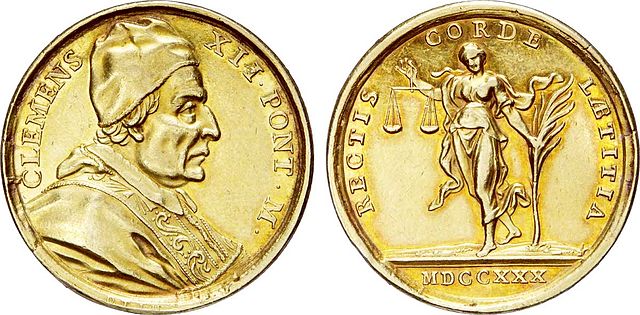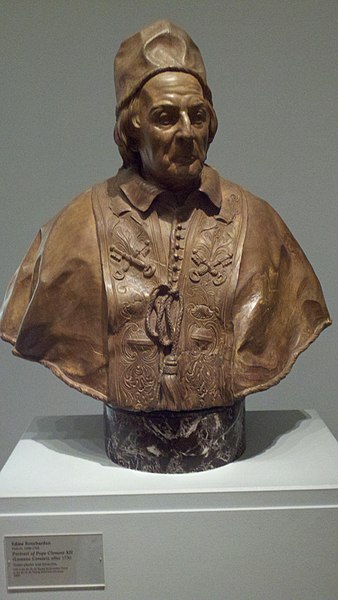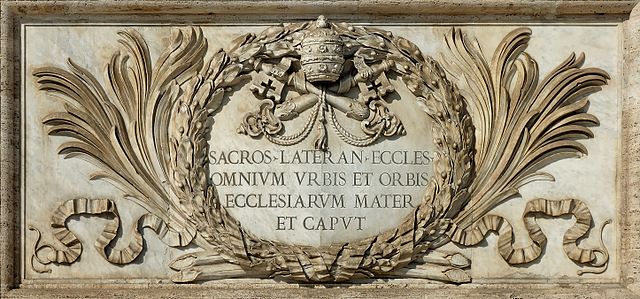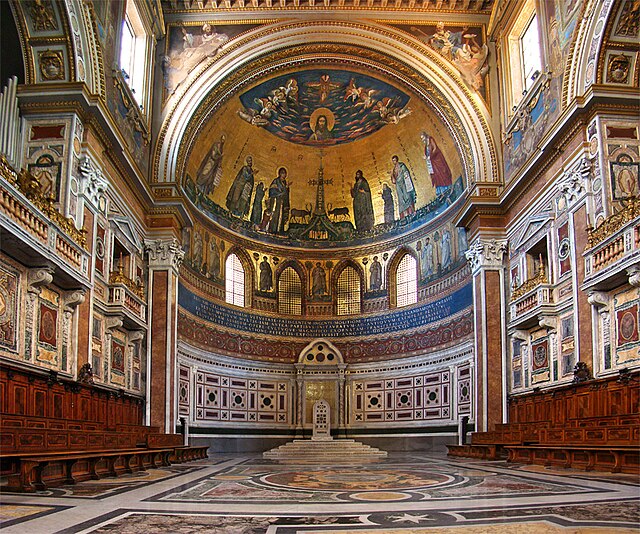Pope Clement XII, born Lorenzo Corsini, was head of the Catholic Church and ruler of the Papal States from 12 July 1730 to his death in February 1740.
Portrait by Agostino Masucci, c. 1730–40
Cardinal Lorenzo Corsini, by Francesco Trevisani.
Clement XII, 1730
Bust of Clement XII by Edme Bouchardon
Archbasilica of Saint John Lateran
The Archbasilica of Saint John Lateran is the Catholic cathedral of the Diocese of Rome in the city of Rome, and serves as the seat of the bishop of Rome, the pope. The archbasilica lies outside of Vatican City proper, which is located approximately four kilometres northwest. Nevertheless, as properties of the Holy See, the archbasilica and its adjoining edifices enjoy an extraterritorial status from Italy, pursuant to the terms of the Lateran Treaty of 1929. Dedicated to the Christ, in honor of John the Baptist and John the Evangelist, the place name, Laterano (Lateran) comes from an ancient Roman family (gens), whose palace (domus) grounds occupied the site; the adjacent Lateran Palace was the primary residence of the pope until the Middle Ages.
Façade of the Archbasilica of the Most Holy Savior at the Lateran
Next to the formal entrance is the archbasilica's declaration to be the head, or Mother Church, of the entire world. Note the laurel wreath and the Papal tiara.
The papal cathedra, the presence of which renders the archbasilica the cathedral of Rome, is located in its apse. The decorations are in cosmatesque style.
The high altar and the 14th-century Gothic ciborium. The relic of the original wooden altar used by Saint Peter comprises the high altar. Above the ciborium are statues of Sts. Peter and Paul.








